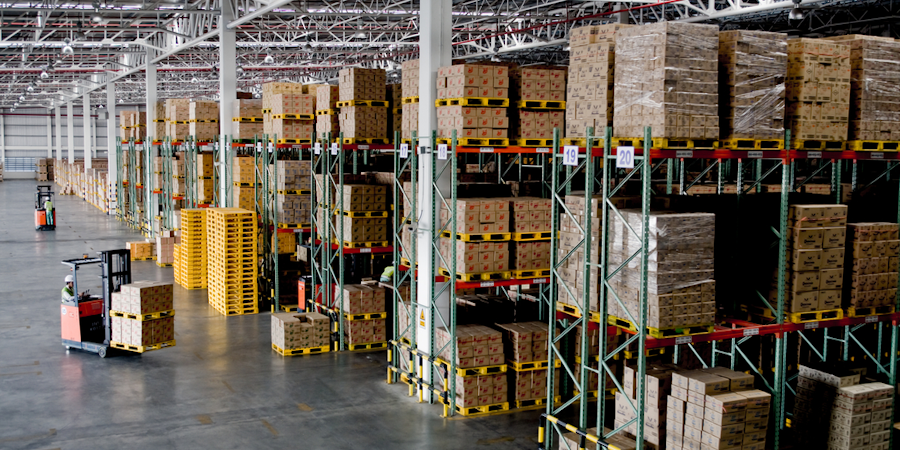News
Improve the Layout of Your Warehouse

One of the most important factors in warehouse efficiency is the layout of the warehouse itself. A poorly conceived set up and floor plan can lead to hours of backtracking and downtime.
Your aisle layout, aisle width and stock organisation all need to be taken into consideration when optimising your layout. Space doesn’t just refer to the square footage of the warehouse. It’s possible to have a very large warehouse with all the floor space in the world, but still have little operable space. Conversely, a smaller surface area can be optimised using efficient racking designed with forklift specifications in mind.
Knowing your tools
The trick is balancing optimum operational space for your pickers and forklifts, with maximum storage allowance. The first step in figuring out this balance is working out what material handling equipment you're planning to use.If you're planning to use VNA forklifts, you can arrange your shelving closer together. On the other hand, if you're in need of sideloaders, having large spaces for turning circles and making use of horizontal space is preferred. This will not only speed up work flow, it will also go a long way in avoiding accidents. The idea here is to provide as wide a path as necessary for your forklift operators.
Stacking intelligently
Width between aisles isn’t the only important consideration in the layout of your aisles. Logical and proper labelling is also key. As much as possible, try to stack items of a similar kind or category in the same aisle, and make sure each aisle is clearly labelled so employees know which items can be found there. Logical layout of stock will avoid hours of confusion and backtracking.Creating shortcuts through aisles can also help to streamline storing and delivery. Putting gaps in the middle of aisles will allow operators to make a direct path to the items they need without having to walk or drive forklifts around entire aisles to get there.
Optimising your routes
As well as laying out your stock logically, an effective stock logistic management system can organise your picking schedule so that your forklifts don't end up double backing, colliding or moving inefficiently. To get the best return on your forklift fleet investment, you want all your machines moving as efficiently as possible.
Maintaining flooring quality
Another way to promote speed and safety in your warehouse is to keep your site in good condition. Pot holes, cracks and debris are all hazards to a forklift truck. They will slow down the work rate as operators are forced to avoid them, sometimes even needing to stop and change course.Uneven surfaces can also cause forklifts to teeter or fall over, resulting in expensive repairs to both the truck and its cargo. Such instances can even result in employee injury. It’s imperative to have a regular schedule of inspection and maintenance of your warehouse and its floor.Many layout considerations that promote forklift efficiency might seem obvious, but they’re never-the-lesscritical to your profitability. Making sure forklift operators have a safe and efficient work space is a great way to boost productivity.
Subscribe
Keep up to date with PHL and all things forklift machinery.